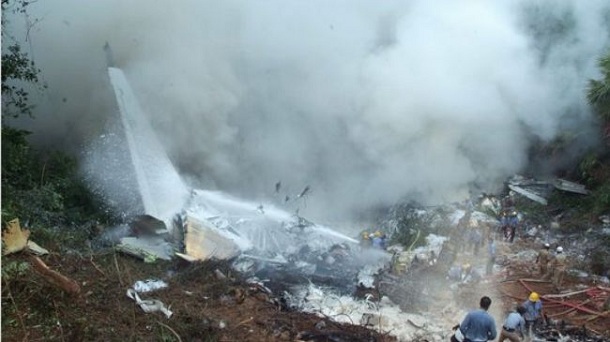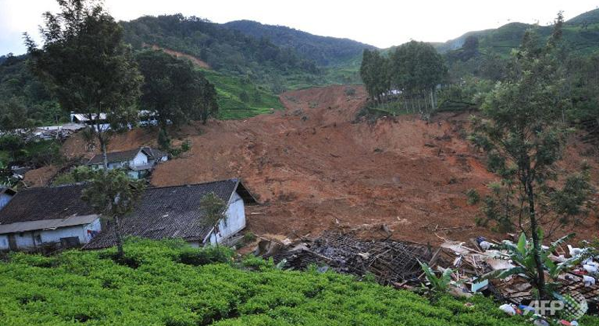
Forty bodies were found floating in Amansea community, along the border of Anambra and Enugu State. The unidentified bodies have been perceived by many as victims of extra judicial killings by government security agencies. As usual, government officials and the Nigeria Police had vowed to “unravel the mystery behind the floating bodies”, one can only be skeptical of what they can truly unravel when the country lacks basic numerical statistics of how many we are. Everybody just dips hand into their vault of assumptions and peg the nation’s population between 140 and 160 million!
Even the last population census conducted in 2006 to arrive at 140 million was greatly flawed with irregularities and baseless hype of figure to earn cheap political advantage, which is more motivated for selfish reasons rather than for nation building. The result witnessed no specific departure from what 1991 census threw up, with Muslim northern states accounting for over half of the country’s official population of 140m. Laughable as it may sound, Kano’s population was more than that of Lagos, while a sizable number of citizens were not enumerated at all. So on the long run, the 2006 population census was a sham, shame and surreal!
Since Federal-State allocations are absurdly based more on population, land mass than on equality (equal shares per state), social development, and revenue generated, one could easily visualise what warrants the distortion of rare population facts. We are just one nation that benefits from distortion of basic facts. Government enslaves us with it while the citizens make sure it never gets better, that’s why a president would lie to the world that electricity generation has improved when we still sleep for weeks in darkness. We lie about our income, expenditure, poverty rate, social service, national identity cards and everything one can think of. That’s why combating crime still remains as elusive as tracing the source of a rainbow, but something needs to be done. Why would human bodies turn water hyacinth and security operatives are so clueless about the cause?
Though surrounding villages in Anambra and Enugu have claimed none of their members are missing, one irrefutable fact is that, the Nigerian government lacks grounded mechanism to identify her citizens either living or dead. The records are not just there. Take it or leave, those bodies are sons, brothers and fathers of Nigerians. And if they are immigrants, do we have their details? Our borders are so porous that you can ship 20 truck loads of human beings in if you know the right Customs and Immigration officers to pay. Our attempt to identify citizens can only be told in the tales of former Internal Affairs Minister, the late Sunday Afolabi saga. Over $214m was committed into that National ID card project. All those who stood trial along with Sunday Afolabi are today national award holders and still living large at tax payers’ expense.
Personally, I hold no faith in the story that might later spring up in respect of the floating bodies (if there would even be any) but I do hope this would be the last of such shameless lack of responsibility on the part of government and security agencies. Government needs to step up the ante of surveillance through a bio-metric data base with central and state control boards. This data base would be a panacea to planning and aid government policy plan, a means to identify fraud, combat terrorism, create a leverage to citizen’s entitlement and to access public services. Inasmuch as I don’t like comparing Nigeria with the United States of America, there is nothing stopping a responsible government from running a Social Security number (SSN) system for permanent residents, and temporary (working) residents such as Nigeriens, Ghanaians, Beninois, Malians etc. If we need play big brother, then it should be with more security caution and management of the borders. These security numbers can further be used to manage tax collection and social welfare. But the government would choose not to do the project in view of the tax benefit simply to run away from the responsibilities of an all inclusive social welfare.
In 2006, the United Kingdom Parliament passed the Identity Cards Act 2006 which provided National Identity Cards, a personal identification document and European Union travel document, linked to a database known as the National Identity Register (NIR). The Act specified fifty categories of information that the National Identity Register could hold on each citizen, including up to 10 fingerprints, digitized facial scan and iris scan, current and past UK and overseas places of residence of all residents of the UK throughout their lives and indices to other government databases (including National Insurance Number) which would allow them to be connected. A government that cannot manage the identity of its citizen is not worth their respect. According to world fact finder, Wikipedia, Identity management (IdM) means the management of individual identities, their authentication, authorization, roles, and privileges within or across system and enterprise boundaries with the goal of increasing security and productivity while decreasing cost, downtime, and repetitive tasks.
In 2007, the National Assembly passed the National Identity Management Commission (NIMC) Act, a replica of that of UK. It has the mandate to establish, own, operate, maintain and manage the National Identity Database in Nigeria, register persons covered by the Act, assign a Unique National Identification Number (NIN) and issue General Multi-Purpose Cards (GMPC) to those registered individuals, and to harmonise and integrate existing identification databases in Nigeria. The Director-General, National Identity Management Commission, Mr. Chris Onyemenam, in order to achieve this magnificent feat( I don’t want to believe it’s impossible) as promised to “recruit the best available talents to fill the spaces within the commission”. All things being equal, the identity registration of Nigerian citizens will begin nationwide in April 2013. And that is where I have my strong reservations.
As much as I want to believe the NIMC, glaring realities put my belief on hold. If truly registration would commence in April, then I don’t see the readiness. The NIMC is still grossly under powered with the basic resources to have an integrated centralised demographic database for the country. Except am mistaken or due process of selection has been subverted, the much taunted recruitment of young, vibrant and talented hands has not been done. Barely three months to commencement. Won’t the new hands be trained or are we on the path to Sunday Afolabi/Sagem again?
The NIMC must understand that the ability to properly identify a person to their true identity is central to their operation, with wider implications for operations against crime and terrorism. These can’t be done by a shabbily put together team. Comprehensive training has to be carried out with a broad-based campaign orientation that would reach the hinterlands and all those staying outside the shores of the country. In recent times, illegal immigration has become one of the key political issues for the country, because of unending menace of Boko Haram whose bulk of suicide bombers are from neighboring countries such as Niger and Mali. To get anywhere, we must be ready to adequately manage the borders!
Aside the collation of the bio metric data and ID card now, a sustainable upgrading mechanism needs to be devised. Nigeria is one of the few countries you can enter without adequate documentation and nobody cares. You don’t even have to state when you would be leaving the country. NIMC needs to work out collation strategies for births and deaths, liaise with the High Courts, Prisons, and Police to get updates on criminal records, with National Emergency Management Authority to get details during disasters, Immigration agencies (Airport authority, sea ports, borders), etc. The recruitment exercise of NIMC needs to put in mind the number of agencies and places it would have to station staff permanently to enhance continuous monitoring and update. Again and most importantly, NIMC must be conscious that the ID card would bring about socio-economic and political integration as against segregation that might be caused by nepotism, ethnic bigotry and religious fanaticism. The horrible scenarios of Rwanda’s Tutsis and Hutus must not be allowed to replicate itself here.
Tuesday 29 January 2013
http://pmnewsnigeria.com/2013/01/29/floating-bodies-and-our-identification-system/







